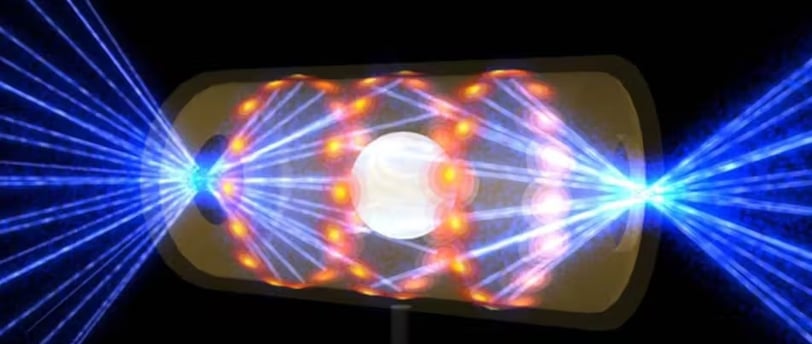Laser-powered fusion experiment doubles energy output, advancing clean energy
Scientists at the National Ignition Facility (NIF) double energy output in a laser-powered nuclear fusion experiment, reaching 8.6 megajoules.
SCIENCE
Team Spark Tech
5/19/20252 min read


Scientists double energy production in controlled nuclear fusion experiment
Advances in Laser-Driven Nuclear Fusion
The National Ignition Facility (NIF), part of the U.S. Department of Energy, has achieved record-breaking results in controlled nuclear fusion experiments. The goal of this research is to prove the feasibility of nuclear fusion as a clean energy source.
In the latest tests, scientists managed to more than double the energy output, reaching 8.6 megajoules in a single shot. To put this in perspective, the 2022 experiment—which marked the first time a fusion reaction produced more energy than it consumed—generated 3.15 megajoules.
How Inertial Confinement Fusion Works
The process at NIF uses inertial confinement, where a small fuel pellet is encased in diamond and placed inside a gold cylinder called a hohlraum. The setup is positioned within a 10-meter-diameter spherical chamber, where 192 high-powered lasers fire simultaneously.
The explosion vaporizes the cylinder, generating X-rays that heat the fuel capsule. Under extreme temperatures and pressure, the diamond shell turns into plasma and collapses inward, compressing the deuterium-tritium fuel until its nuclei fuse, releasing energy.
Positive Net Energy, But No Power Grid Return Yet
Despite the advancements, none of the tests have returned energy to the power grid. The first experiment with positive net energy in 2022 required about 300 megajoules to power the lasers, highlighting the gap between current results and commercial energy generation.
Researchers emphasize that NIF was not designed for efficiency but rather to demonstrate the physical viability of controlled nuclear fusion. With each new experiment, nuclear fusion transitions from theoretical possibility to practical reality, even if still in its early stages.
Other Nuclear Fusion Approaches
Beyond the method used at NIF, another key area of research is magnetic confinement fusion, which relies on powerful superconducting magnets to keep plasma compressed. Various laboratories worldwide are exploring this technique in hopes of making fusion commercially viable.
Conclusion
The NIF experiment represents a significant step toward clean and sustainable energy. While challenges remain, recent findings show that nuclear fusion is moving closer to becoming a viable alternative for the planet’s future energy needs.
Source: Adrenaline
Read More...
Photo by Lawrence Livermore National Laboratory
News
Stay up to date with the latest technological news, Science, Internet, Social Networks and Smartphones.
© 2025. All rights reserved.
